Burnie Group has worked in the information technology (IT) strategy space for decades. Over the years, our team has seen many examples of good and not-so-good IT strategies.
Developing a robust IT strategy requires knowledge of technology and many business-related aspects. To share our IT strategy knowledge, we identified 11 elements of a solid IT strategy with concrete examples and visuals. The first four elements relate to the IT current state assessment and the remaining seven to a target IT state design.
- IT baseline
- Financial IT analysis and IT benchmark
- Technology assessment by pillar
- IT opportunities
- IT design principles
- Alignment of IT and business strategy
- Target state design & Target IT architecture
- Target IT governance
- Technology innovation
- Prioritization of IT opportunities and target state design elements
- IT roadmap
IT current state assessment
1. IT baseline
A current state assessment builds a mandatory fact base for any IT strategy. One of the initial elements of the current IT state assessment is understanding the baseline relating to costs and staff. It is important to split these across key IT towers: applications (including development and maintenance), infrastructure, user-level computing, and IT management. An additional split is required for costs and expenses: into capital expenditures (CapEx) and operational expenditures (OpEx).
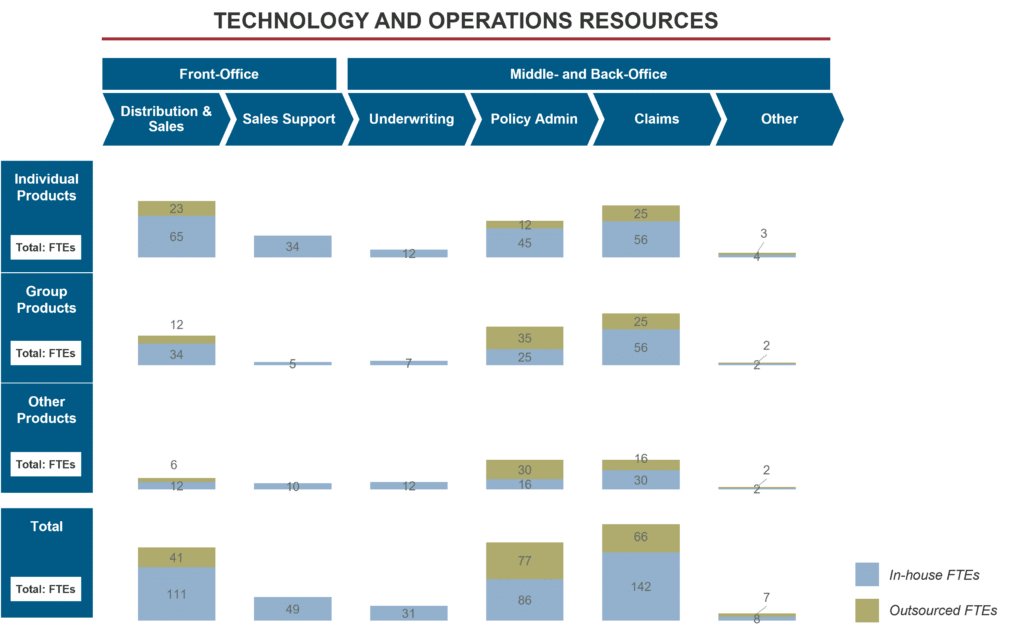
2. Financial IT analysis and IT benchmark
Once the key elements of the IT baseline are collected, it is time to start analyzing and benchmarking them. Financial IT analysis must include assessing costs (both CapEx and OpEx) by IT tower, by either change-the-business or run-the-business, by type (e.g. staff, equipment, services), degree of outsourcing, and degree of off-shoring, etc. It is essential to have a look at the costs associated with all key projects and initiatives.
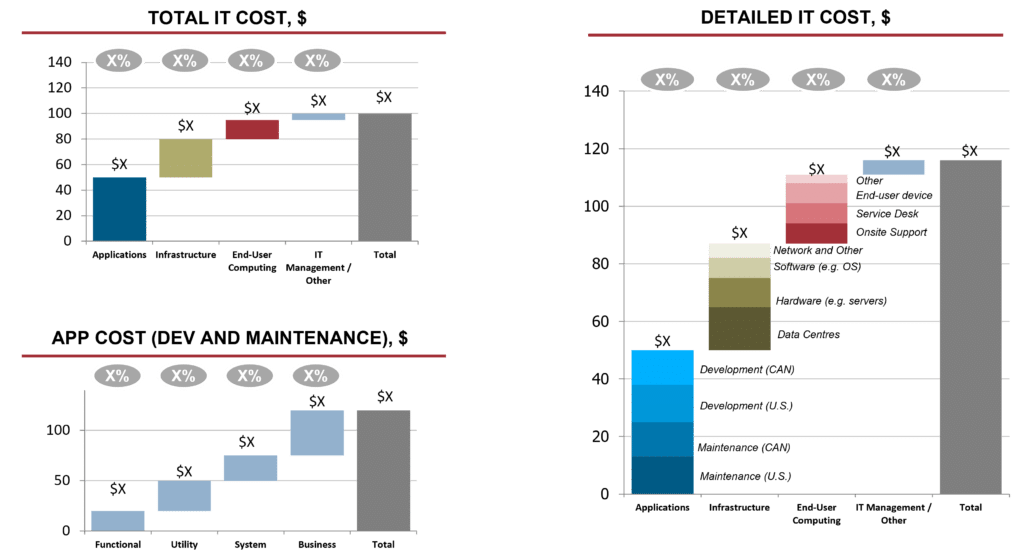
Common metrics allow companies to understand if they underspend or overspend on technology compared to peers or evaluate if they invest enough into changing and transforming their organization rather than simply running it. Examples of must-benchmark ratios are:
- IT cost ratio: IT expenses to total revenue
- Share of IT costs to run-the-business: Run-the-business IT costs / Total IT costs
- Share of IT costs to change-the-business: Change-the-business IT costs / Total IT costs
- IT intensity: Total IT costs / Total IT costs + Total Ops costs

3. Technology assessment by pillar
The technology assessment is one of the most important and work-heavy elements of the current state. One can imagine it as several IT maps – by application, infrastructure elements such as data centers, mainframes and servers, network elements, data clusters – with numerous insights mapped on them. These insights are:
- Technology issues (e.g., currency, lack of integration)
- Business issues (e.g., manual processing, long processing times)
- Risks (e.g., security, non-compatible interfaces)
These elements can be captured through existing assessments, discussions with SMEs, interviews with business partners, and reviews of existing IT artifacts, including applications, infrastructure, data architectures.
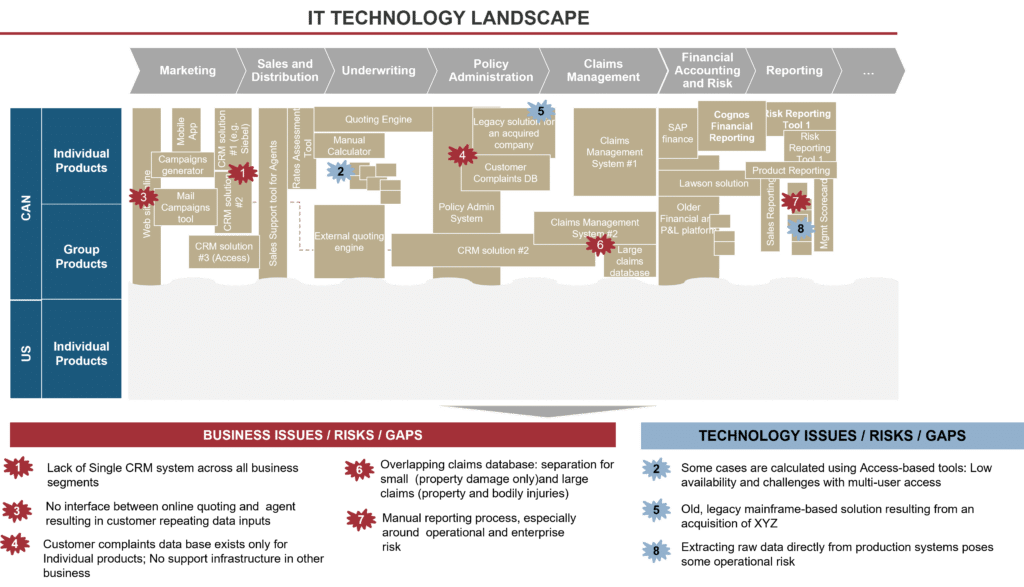
We typically assess IT management and IT governance as separate components that consist of multiple elements, which include the following:
- IT roles and responsibilities
- IT vendor management
- IT risk management
- Budgeting and investment management
- Performance management

A separate step here is identifying all IT projects. Projects must be assessed so they can align with a newly designed target state. Then, they can be either continued, accelerated, or stopped, even if it results in sunk costs.
4. IT opportunities
IT opportunities are one of the most exciting steps in the IT current state assessment. All identified issues and risks from the technology and business sides must be synthesized into a set of opportunities, ideally grouped in various categories. This list of opportunities will inform the target state design.

When we review all IT current state assessment deliverables, we can move forward with the key elements of IT strategy related to the target IT state.
Learn more about our IT strategy capabilities.
READ MORETarget IT state design
5. IT design principles
It is best practice to start the design of IT strategy by designing the IT principles that will guide the entire target design work. These principles filter out options that are not aligned with the target state. These principles should be general enough not to exclude too many possible options.

6. Alignment of IT and business strategy
Aligning IT and business strategy is very important but often forgotten. It is crucial to understand that, in most cases, IT is a function that does not exist in a vacuum; IT must enable business. It means that an IT or technology strategy must support and empower a business to achieve its objectives. These objects can range from offering low-cost services, equipping customers with efficient self-service, providing the most innovative solutions, or ensuring the highest level of security for customer transactions.
There should be a clear link between IT strategy and business strategy, which may include, among other things, mapping IT objectives and requirements to business objectives.
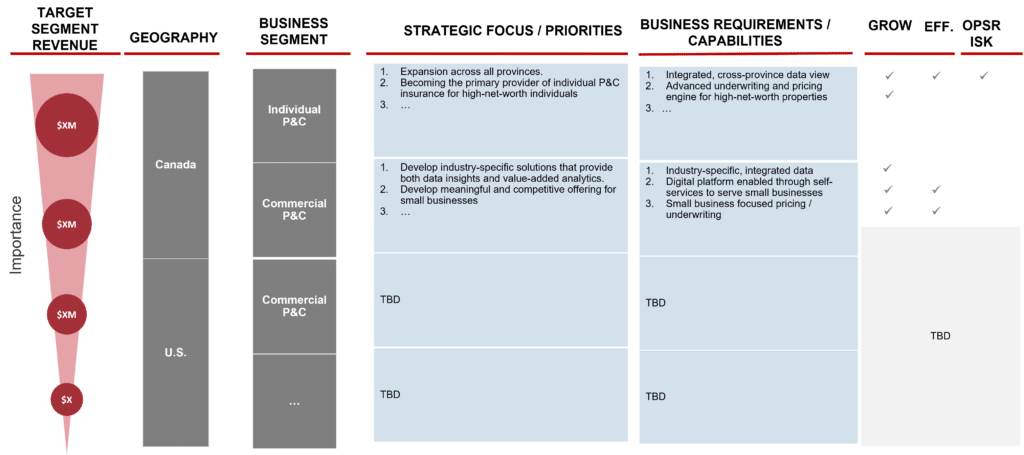
7. Target state design & Target IT architecture
Target state design is the heart of IT strategy. It describes a consistent, clearly defined target state across various IT towers, including:
- Applications (including architecture)
- Infrastructure (including architecture)
- End-user computing (including architecture)
Target state design might be combined with defining target architectures (technology, infrastructure, data, business). When properly defined, the resulting artifacts will communicate to all parties the target state towards which everybody is working. These artifacts must be understood by a wide range of business stakeholders, not just those with a deep technical background. Making artifacts easily understandable will enable business stakeholders to evolve business offerings and align them with technology evolution.
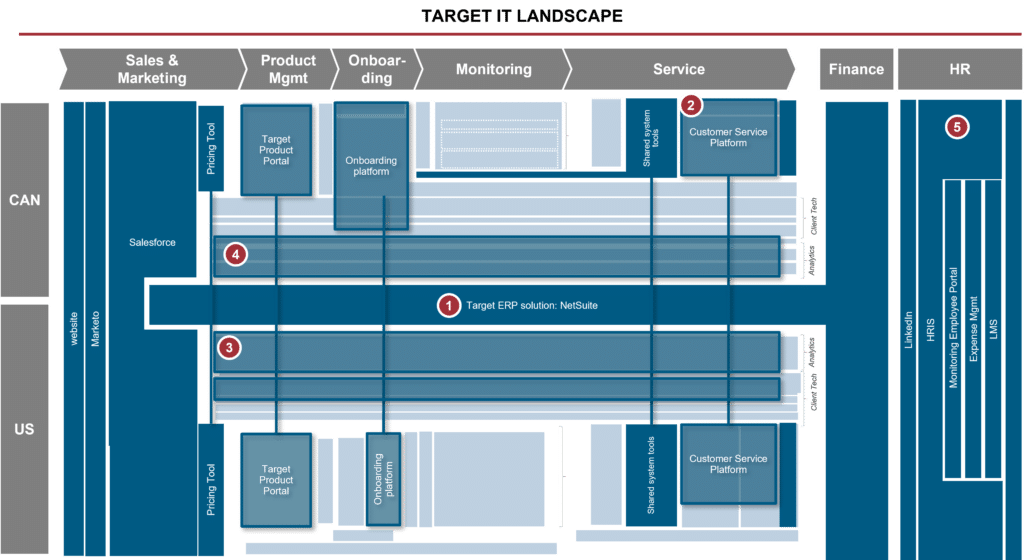
In some cases, there is more than one alternative to the target state. Therefore, making decisions about what path to take requires a concise comparison of options.

One of the target state design deliverables is a long list of derived target state IT elements and capabilities that might be implemented in the future. Going forward, this list can be combined with a list of opportunities from the current state assessment to inform the IT roadmap.
8. Target IT governance
Establishing target IT governance at this stage in IT strategy development is optional. Some companies might already have an efficient and effective IT governance to build upon and do not need to reshuffle it as a part of every IT strategy. If it is not the case, IT governance might be included in the IT strategy scope. It means defining clearly and concisely a number of IT governance elements, including:
- IT vendor management
- Key IT processes
- Roles and responsibilities
- IT supply and demand management
- IT budgeting and cost allocation
- IT service model and service level agreements
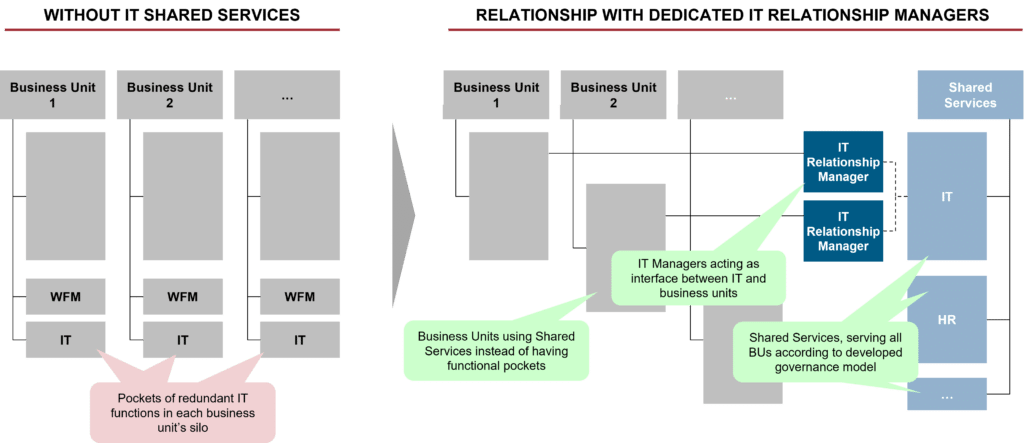
9. Technology innovation
Technology and innovation go hand-in-hand. While new technologies can redefine how clients are served and what products are offered, they can also be used to make IT more efficient and effective (e.g., cloud computing, artificial intelligence, intelligent automation, and robotic process automation).
Consequently, an essential part of every organization’s IT strategy is assessing potential innovations and incorporating them into the IT roadmap. That includes a portfolio of innovative technologies to watch for and a roadmap of trials, pilots, and roll-outs that follows a clearly defined gate logic.

10. Prioritization of IT opportunities and target state design elements
This element of IT strategy links together deliverables both from the current state assessment (in the form of opportunities) and from the target state design (in the form of target state elements and capabilities). It is important to develop a robust list of all IT opportunities evaluated across two dimensions:
- Ease of implementation (or effort required)
- Estimated impact and benefits

The evaluation is not a straightforward task. It is important to remember a few things:
- Not all opportunities can be easily associated with benefits. There will be capabilities required to build other capabilities (e.g., a single customer view). We call such capabilities “enablers,” which can be incorporated into an IT roadmap and impact-driving opportunities and capabilities.
- Some opportunities and capabilities do not come alone and must be bundled with a few others to succeed, such as online customer data capture and integration with a CRM.
- Some opportunities will be there to reduce risks – it is important to agree on an approach to associate some value with them, such as high-security standards.
11. IT roadmap
The development of any IT strategy concludes with the development of an IT roadmap. However, we found that it is helpful, in addition to classical roadmap views, to develop a so-called architecture or target state evolution view, which shows year by year how the organization is expected to evolve towards the target state.
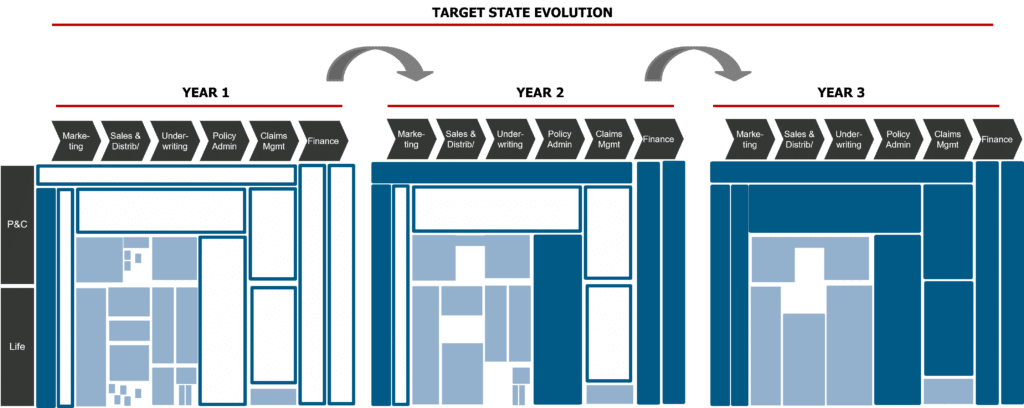
Nevertheless, the final IT strategy deliverable must include a classical roadmap with all key initiatives, associated costs, milestones, roles, and responsibilities. This will be a basis for the ongoing tracking of IT projects going forward.

If you are interested in assessing your current IT state or developing an IT strategy, Burnie Group’s experienced team has decades of relevant experience across a range of industries, from financial services and insurance to software providers and real estate organizations.
Are you planning for a merger or acquisition? Remember that IT in PMI is one of the key sources of benefits and, in most cases, has to be addressed from the very beginning. Our PMI specialists, with a focus on technology, will be happy to guide you through the entire process.
About the author

Alexey Saltykov
Find out how an IT strategy can benefit your organization.
CONTACT US
